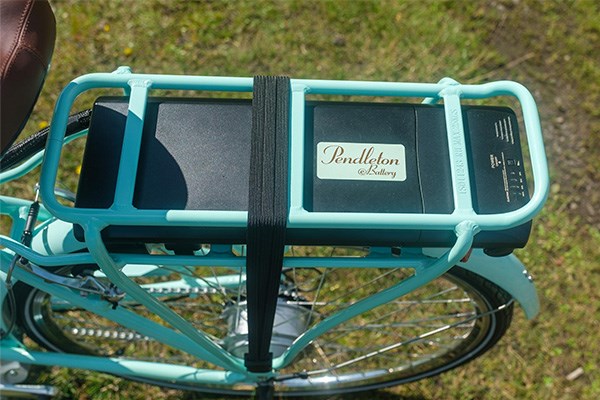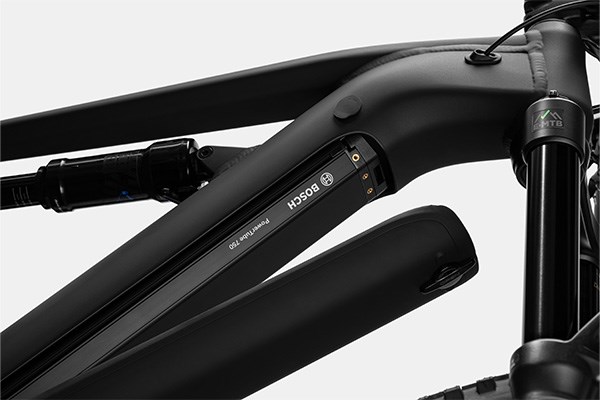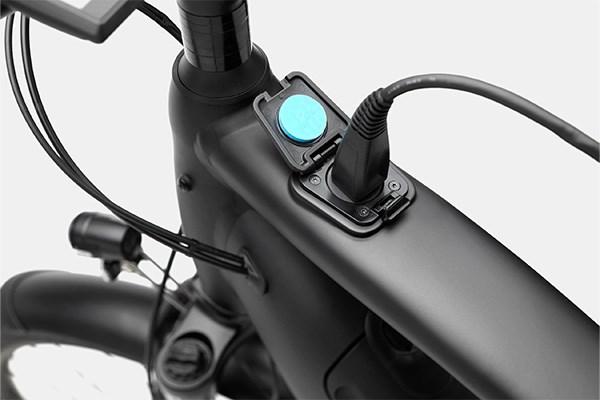All our e-bikes use high-quality lithium-ion batteries which offer similar performance levels for their size. Battery capacity and position on the bike vary and this can make a big difference. Let’s take a closer look at the things you need to know about e-bike batteries.
Battery Size
Battery size or capacity makes the biggest difference to e-bike performance. A larger capacity battery will allow you to ride further with less effort, but a smaller battery will make the bike lighter. Your ideal battery capacity will depend on the type of riding that you want to do as well as the style of e-bike that it’s fitted to. More powerful motors tend to use up battery capacity quicker, but you can vary the power modes to manage battery capacity whatever size motor your bike has.
Read our e-bike motor guide to find out more.

How is battery capacity measured?
Watt Hours (Wh) is the most useful measure of battery capacity. This tells you how much power output in Watts (W) the battery can support in one hour. For example, a 500Wh battery will power a motor that draws 500W for 1 hour, or one that draws 250W for 2 hours. This is a very simplified example as e-bike motor power isn’t static but varies depending on how and where you ride. Road legal ebikes have a nominal power rating of 250W but the peak power can be as high as 600W.

Do more powerful e-bikes need bigger batteries?
The simple answer is yes, the more powerful the motor is the larger the battery capacity needs to be. On paper a motor that delivers a maximum of 90 newton metres (Nm) of torque will need a battery of at least 500Wh, while a less powerful 40Nm motor may only require a 250Wh battery pack.
In reality the capacity you actually need will depend on how much of the motor power you use when you ride. If you ride in Eco mode on smooth flat terrain, then you will use less battery capacity than if you ride in Boost mode on steep rough ground.

How much battery capacity do I need?
The size of the battery that you need depends on where you ride, how fast you want to ride, how heavy you are and how much power the motor draws. Rough surfaces, steep inclines, wind, and weight all require more power, so will use up more of your battery capacity.
More powerful motors give you the option to ride up steep, rough terrain faster. Most riders will want to take advantage of this, so a bigger battery is advisable on more powerful e-bikes. Battery capacities up to 900Wh are available for high power electric mountain bikes and this will give you an incredible range.

How much do batteries weigh?
The downside to having a large battery is weight. The battery is the heaviest part of an e-bike - a 400Wh battery weighs around 2.4kg and 700Wh battery around 3.8kg. Combined with a bigger motor this makes the most powerful e-bikes much heavier than less powerful ‘lightweight’ e-bikes.
Rider weight is also an important consideration as it is the combination of bike plus rider that the motor has to work with. Heavier riders require more power to ride at the same speed as lighter riders and this is especially apparent on the hills.

Weight and handling
Weight makes a difference to how a bike handles too. A heavier bike can feel more stable especially on rough terrain, but it will feel more cumbersome on tight turns. Of course, a heavier bike requires more power to get it up the hills. This means you’ll either need to pedal harder or use more motor power.

Lighter less powerful e-bikes feel more like a regular bike to ride. You won’t have the power to fly up the hills as fast. But you also don’t need to use as much power to ride up at a steady pace, so you don’t need such a large battery. A 300Wh battery pack will be plenty for an average rider on an e-bike with a 40Nm motor if you’re careful with the power modes.
Typical E-Bike Battery Sizes
|
Peak motor output |
Typical Battery size |
| 40Nm | 200 – 300 Wh |
| 50Nm | 300 – 500 Wh |
| 75Nm | 400 – 700 Wh |
| 90Nm | 500 – 900 Wh |
Battery position
The position of the battery on the bike effects the way a bike handles, and how easy it is to. The lower the battery is in the frame the more stable the bike is. This is apparent when riding as well as when pushing and parking the bike. The flip side is that batteries higher up the frame tend to be easier to remove for charging.

Removable batteries
Most e-bike batteries can be removed for off-the-bike charging, and this is most easily done on bikes with external batteries. On city bikes the batteries are often locked in place for added security. Electric bikes with batteries concealed within the down tube can be more difficult to remove and sometimes require turning the bike upside down. Some lighter weight e-bike have fully enclosed batteries that can’t be removed by the user.
Note: If you’re not able to charge the bike where you store it make sure you get one with a removable battery pack.

Range Extender Batteries
Some e-bikes have an optional range extender battery pack that can be used alongside (or even instead of) the main battery. These usually fit on the downtube of the bike, sometimes in a water bottle cage, and enable you to extend your range by up to 50% on some bikes. It’s worth noting that maximum battery size that you can take on to a plane is 160Wh, so a range extender of this size is a possible solution if you need to fly with your e-bike.

Battery Charging
Electric bike batteries can usually be charged both directly with the battery on the bike and separately with the battery removed. There are some exceptions to this; some city e-bikes can only be charged with the battery off the bike, and some lightweight e-bikes with non-removable batteries can only be charged directly.
See our charging e-bike batteries guide for more on this.

How to store e-bike batteries
Lithium-ion batteries don’t perform well in very cold or hot conditions so should be stored above zero degrees and away from direct sunlight. If you store your e-bike in a shed or garage, then it’s best to bring the battery indoors in the cold winter months. When storing the battery for long periods of time ensure that there is some charge in it, 30% – 60% is ideal.
See our maintaining your electric bike guide to find out how to best look after your e-bike.





